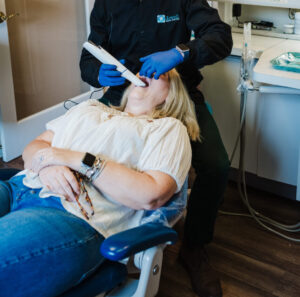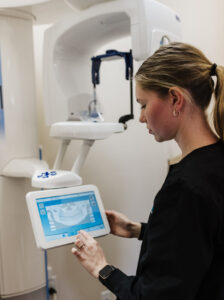Dentistry has come a very long way since Jewell & Associates opened its doors here in Wilmington in 1958. While many of the techniques and principles of dentistry that were used in 1958 are still relevant today, other advances have dramatically increased efficiency, patient comfort and esthetics. Our office is committed to utilizing the latest technology to maximize patient comfort and minimize time that patients need to spend in our office.
Our office is equipped with the following to help enhance your experience while at our office:
INTRAORAL SCANNER
Intraoral scanning is the modern way to take an impression of a person’s teeth and allows us to forego traditional “putty” impressions in most cases. This can be a game-changer for individuals with strong gag reflexes or difficulty breathing through their nose. It also provides an unparalleled level of accuracy and communication with dental laboratories.
From a patient perspective, getting an intraoral scan is comfortable, quick and painless. The scanner takes thousands of images of the patient’s teeth and then sews those images together into a 3D image that can be sent to a dental laboratory or that a dentist and patient can view together.

CBCT X-rays (3D x rays)
Our office is equipped with a CBCT x-ray machine. Unlike traditional dental x-rays, a CBCT allows us to obtain a 3D image of a person’s tooth, jaw or entire oral cavity. This allows the dentist to see inside a tooth and the surrounding bone to definitively diagnose cracks or infections that might not show up on a traditional two-dimensional x-ray. CBCT scans are very safe. The x-ray radiation exposure for a CBCT is minimal compared to what we receive just by being alive on Earth and is significantly less than that of medical CT scans.

Intraoral Cameras
Our operatories are equipped with high-definition intra-oral cameras so patients can see and better understand what the dentist is seeing inside the mouth. Dr. Jewell loves sharing these images with patients so that patients feel fully informed about changes occurring in their mouth.
